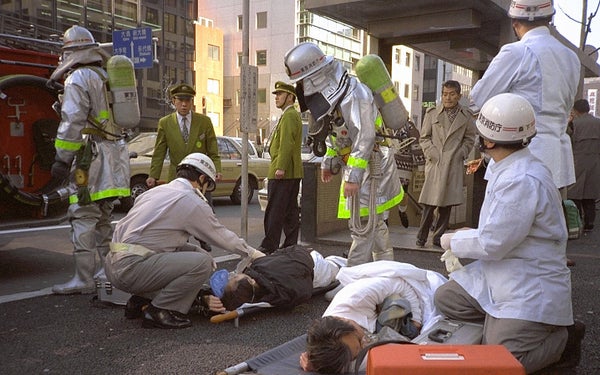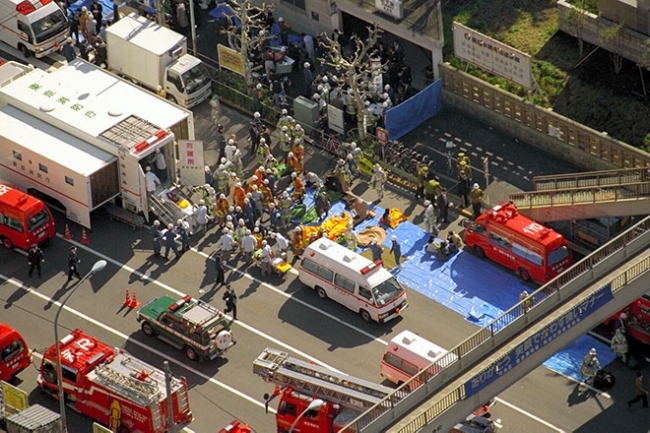Japan’s Deadliest Act of Domestic Terrorism
On March 20, 1995, the Japanese doomsday cult Aum Shinrikyo launched a coordinated sarin gas attack on the Tokyo subway system, marking one of the worst acts of domestic terrorism in Japan’s history. The attack resulted in 13 deaths, 50 severe injuries, and over 5,000 people experiencing symptoms of exposure to the deadly nerve agent. The incident sent shockwaves across Japan and the world, raising concerns about the threat of religious extremist groups and chemical warfare in terrorism Aum Shinrikyo Tokyo Subway.
The Attack: A Coordinated Chemical Assault
During the morning rush hour, five Aum Shinrikyo cult members boarded separate subway trains on three of Tokyo’s busiest lines—Marunouchi, Hibiya, and Chiyoda—heading towards the government district of Kasumigaseki, home to several ministries and agencies. Each attacker carried plastic bags filled with liquid sarin concealed in newspapers. Once inside the trains, they used sharpened umbrella tips to puncture the bags, releasing the toxic gas into the enclosed subway cars before fleeing Aum Shinrikyo Tokyo Subway.
Sarin, a highly lethal nerve agent, quickly spread, causing commuters and subway staff to experience symptoms such as blurred vision, convulsions, difficulty breathing, and paralysis. Many collapsed on station platforms, while others managed to escape only to suffer lingering effects later. Despite the chaos, Tokyo’s emergency responders acted swiftly, treating victims and evacuating affected stations, which helped prevent even greater casualties.
Aum Shinrikyo: The Doomsday Cult Behind the Attack
The attack was orchestrated by Aum Shinrikyo’s leader, Shoko Asahara, a self-proclaimed guru who had amassed thousands of followers, promoting a mixture of Buddhism, Hinduism, and apocalyptic prophecies. Asahara believed that a global Armageddon was imminent and that his cult must trigger societal collapse to take control. Under his orders, Aum Shinrikyo had secretly manufactured chemical weapons, including sarin, at their facilities in Kamikuishiki, Yamanashi Prefecture Aum Shinrikyo Tokyo Subway.
The Aftermath: Arrests and Executions
Following the attack, Japanese authorities launched one of the largest criminal investigations in the country’s history. Aum Shinrikyo’s compounds were raided, revealing chemical labs, stockpiles of weapons, and plans for future attacks. Shoko Asahara and dozens of senior cult members were arrested and charged with murder, terrorism, and illegal weapons production.
After years of trials, Asahara was sentenced to death in 2004, along with 12 other key members. They were executed by hanging in 2018, marking the final chapter in the cult’s deadly legacy. Though Aum Shinrikyo was officially disbanded, splinter groups like Aleph and Hikari no Wa continue to exist under surveillance Aum Shinrikyo Tokyo Subway.
Impact on Japan and Global Counterterrorism
The Tokyo subway sarin attack had far-reaching consequences. It exposed gaps in Japan’s law enforcement regarding extremist groups and led to stricter regulations on religious organizations and chemical weapon security. Globally, the attack served as a warning about the dangers of non-state actors using weapons of mass destruction, influencing counterterrorism policies worldwide.
Today, the 1995 attack remains one of the deadliest chemical attacks on civilians and a stark reminder of the devastating impact of religious extremism and terrorism.




















